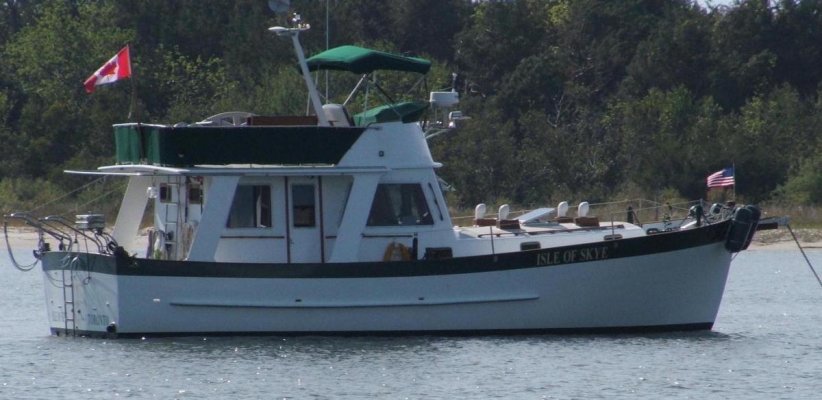tedted
Veteran Member
- Joined
- Feb 27, 2016
- Messages
- 54
- Location
- USA
- Vessel Name
- Castoff
- Vessel Make
- 77 Heritage West Indian 36
Hi all, I had a chance to try out our West Indian 36 Trawler last week and came away feeling something isn't quite right. The boat was repowered from a 135 hp Perkins 6cyl to a 240 hp Perkins turbo 6cyl.
The prop is allegedly a 23" pitch and 21" diameter. The transmission is a Borg Warner 2.1 to 1.
At 2400 rpm the gps showed a speed of 7.2 mph. I didn't have time to set it up for knots. The engine seems to be way underworked. I didn't take the throttle up higher as I'm still trying to get a feel for things. I think it would easily go over max rpm. The exhaust temp at sustained 2400 rpm was 500 deg. I don't know if this is low but to me it seems to be.
I need to get the boat home before I can tear into this but thought I throw this out there for some input. I was curious what would be a good cruise rpm to run the Perkins 6.3544 turbo. According to Perkins the engine is rated at 2400rpm max. What's scary is this is where the former owner ran the engine all the time and suggested that I should run there also. It hasn't seemed to hurt it though.....
All thoughts would be appreciated. Thanks, Ted
The prop is allegedly a 23" pitch and 21" diameter. The transmission is a Borg Warner 2.1 to 1.
At 2400 rpm the gps showed a speed of 7.2 mph. I didn't have time to set it up for knots. The engine seems to be way underworked. I didn't take the throttle up higher as I'm still trying to get a feel for things. I think it would easily go over max rpm. The exhaust temp at sustained 2400 rpm was 500 deg. I don't know if this is low but to me it seems to be.
I need to get the boat home before I can tear into this but thought I throw this out there for some input. I was curious what would be a good cruise rpm to run the Perkins 6.3544 turbo. According to Perkins the engine is rated at 2400rpm max. What's scary is this is where the former owner ran the engine all the time and suggested that I should run there also. It hasn't seemed to hurt it though.....
All thoughts would be appreciated. Thanks, Ted

